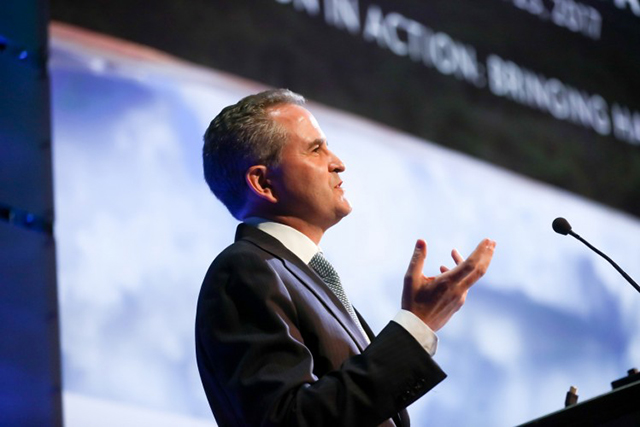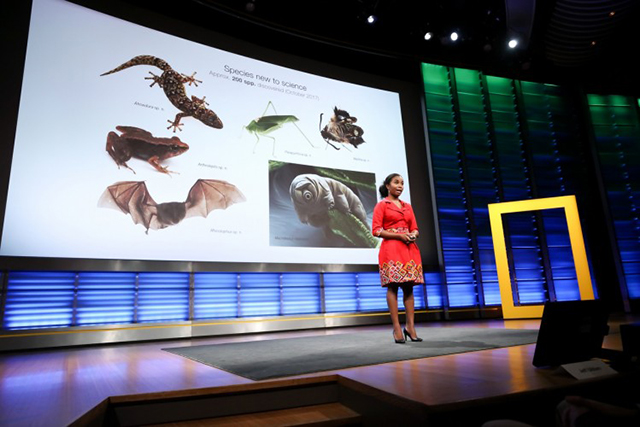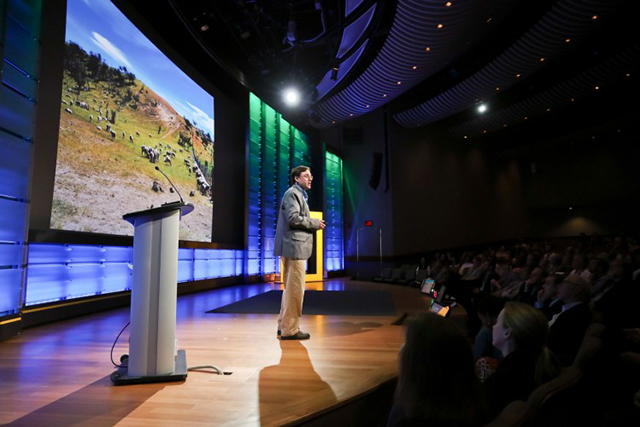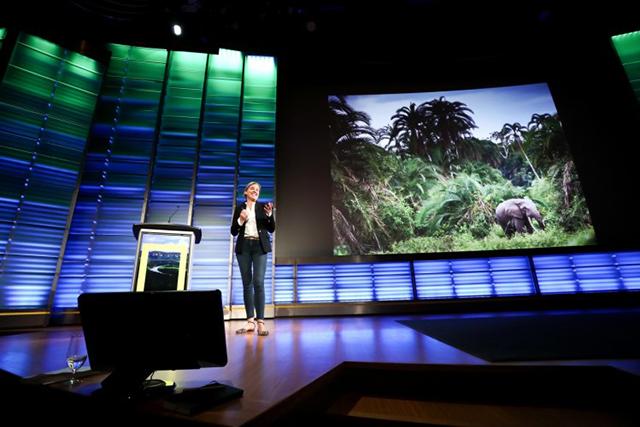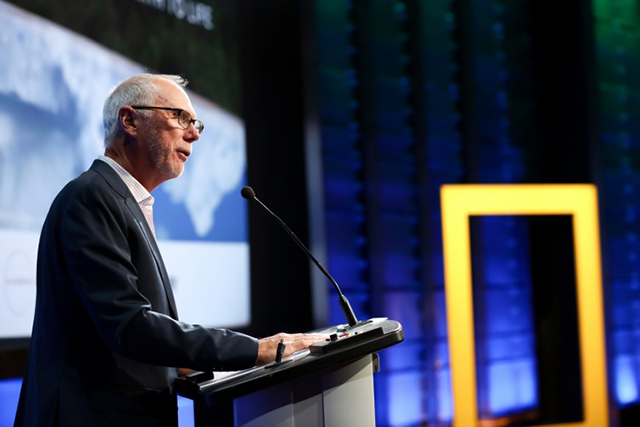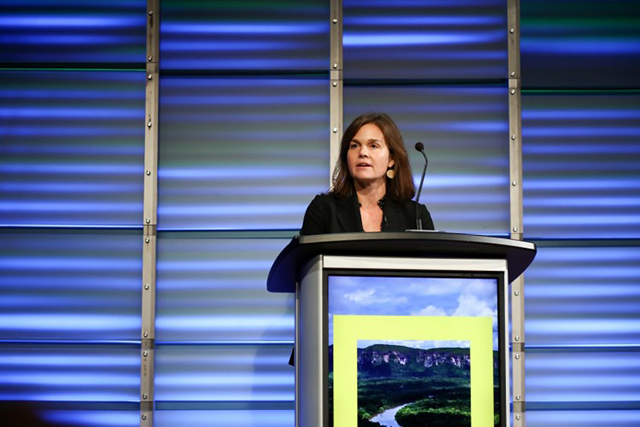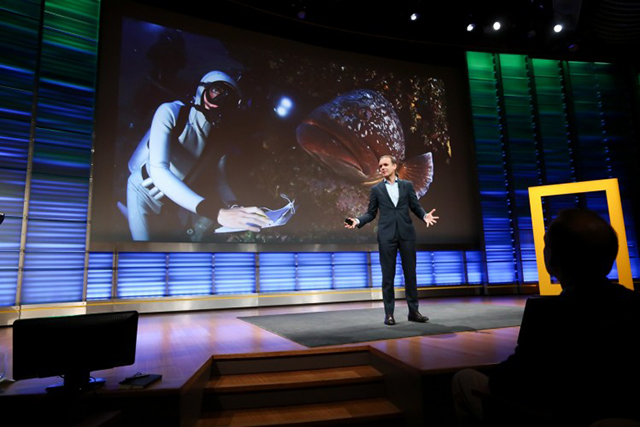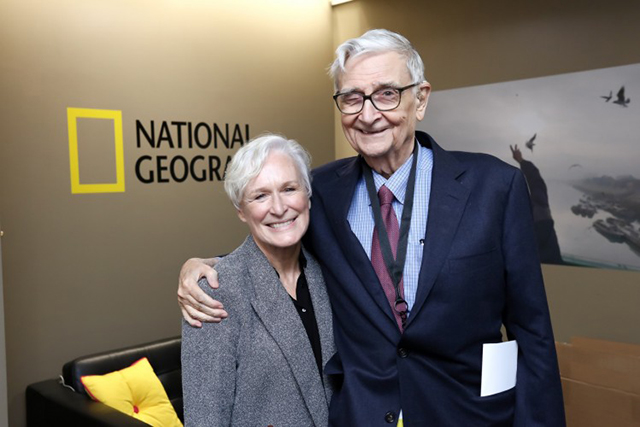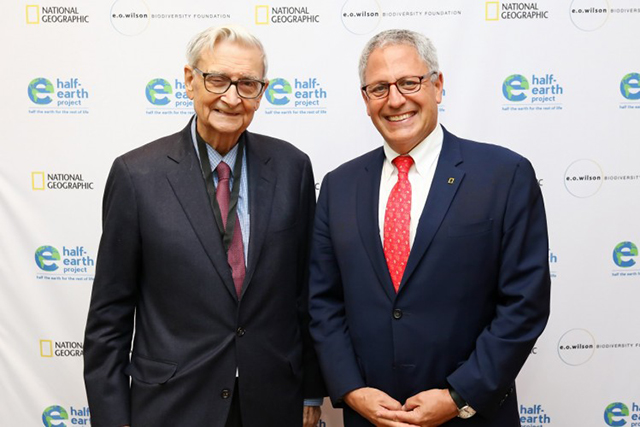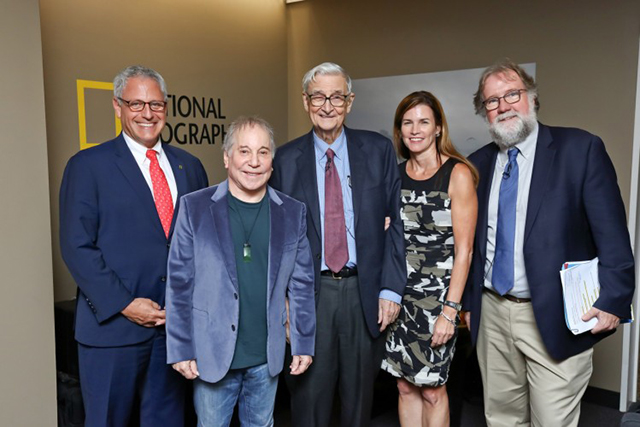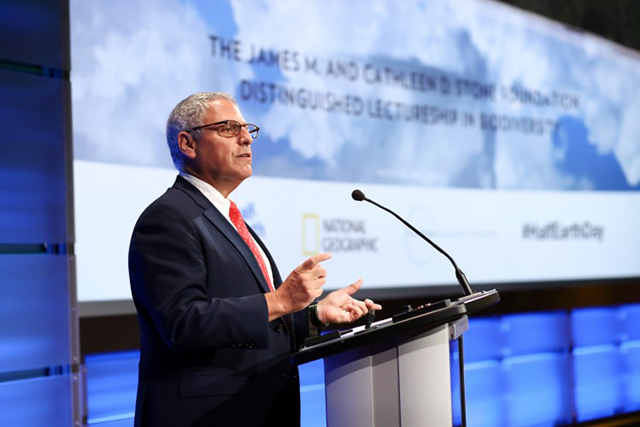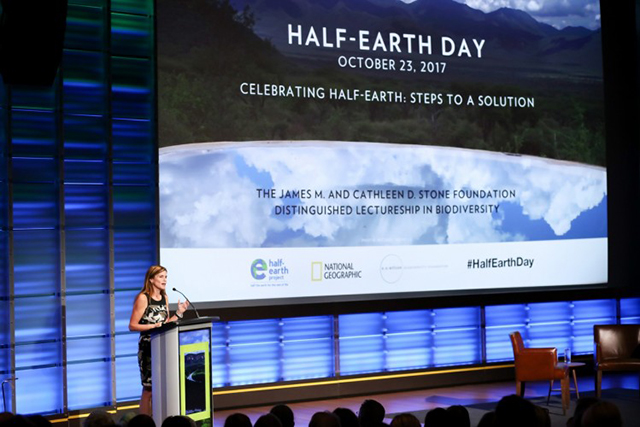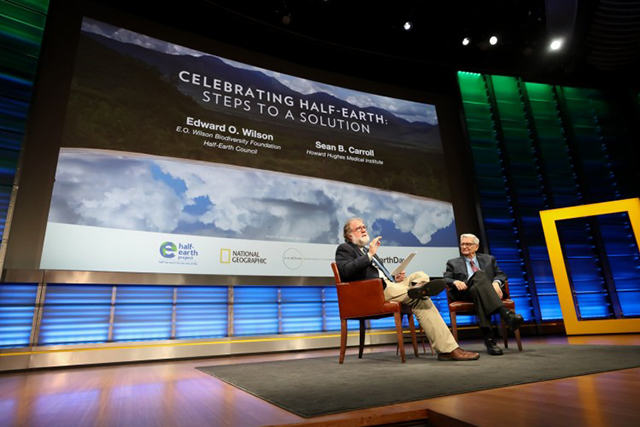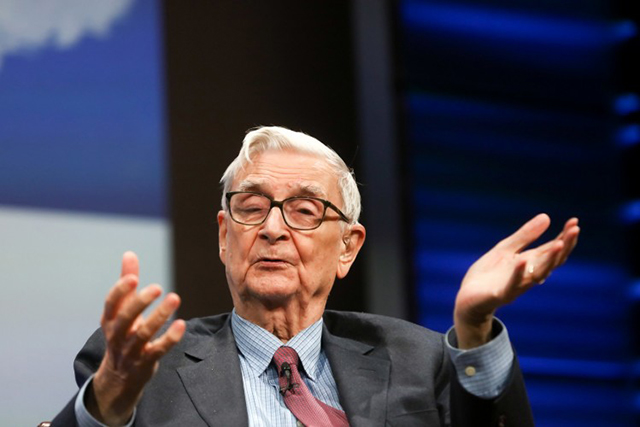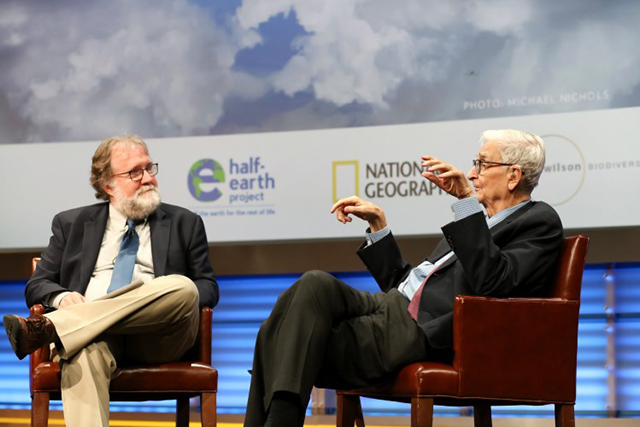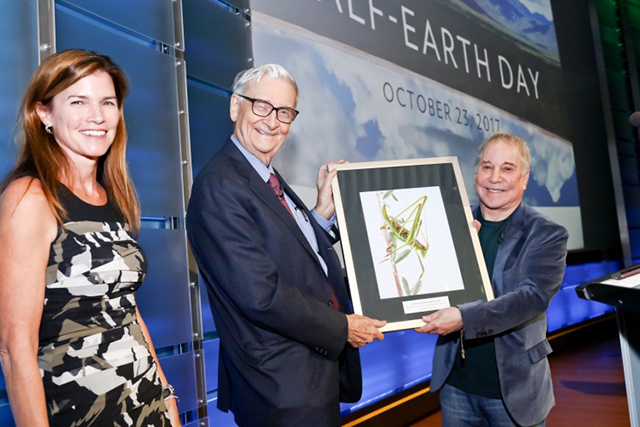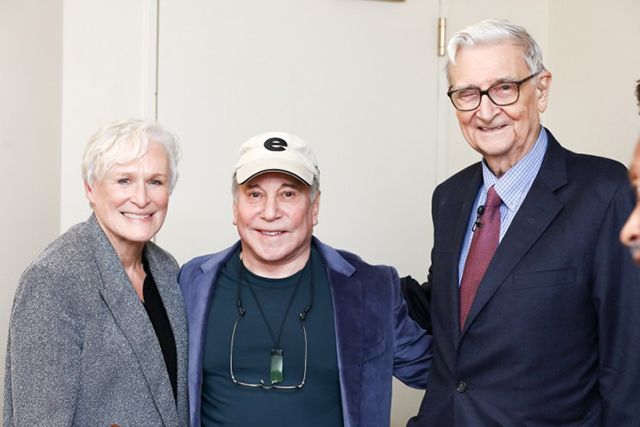The Half-Earth Project powers one of the grandest conservation efforts of our time, and provides the urgently needed research, leadership and knowledge necessary to conserve half the planet. If we conserve half of our land and seas, the bulk of biodiversity will be safeguarded from extinction, and life on Earth enters the safe zone.
The Half-Earth Project made great progress in 2017, highlighted by the inaugural Half-Earth Day held on October 23 in Washington, D.C. The event brought leading scientists, conservationists, and Half-Earth supporters from around the world and across disciplines to share their ideas and inspire innovative and impactful conservation efforts with this audacious goal in mind.
Afternoon Session
Moderated by National Geographic Magazine Contributing Writer Jamie Shreeve, the afternoon presentations by Half-Earth Project partners highlighted model conservation efforts from the Gorongosa Restoration Project, Tompkins Conservation, African Parks, American Prairie Reserve, and Pristine Seas.
Dominique Gonçalves, Gorongosa Restoration Project
Years ago, Mozambique’s president decreed, “Gorongosa National Park should be a human development engine that should serve and help the local people even as the park replenishes its wildlife.” Today, the park is an example of how land and people can successfully coexist.
Tom Butler, Tompkins Conservation
Vast landscapes in Chile are being protected in their natural state, areas “where the land is not yoked to human will, human desire to manage, manipulate and exploit, where the land is home to self-willed creatures free to flourish in their own ways.”
Alison Fox, American Prairie Reserve
Fox and her team are creating a uniquely American park for wildlife and people, the largest wildlife complex ever assembled in the continental United States. “We’re pursuing three parallel tracks: acquiring habitat, remodeling that habitat to focus on biodiversity, and ensuring public benefit. Because of this integrated approach, we believe we are well on our way toward success.”
Andrea Heydlauff, African Parks
Managing protected areas on behalf of governments across Africa, Heydlauff notes: “What’s fantastic is that wildlife can rebound. Nature knows what to do. They just need to be given the space and security in order to thrive. And where wildlife thrives, people thrive.”
Enric Sala, Pristine Seas
Protecting the last pristine marine ecosystems worldwide is a huge goal. “I hear ‘Yeah, yeah, whatever. You helped to protect all these areas. Then what happens? Climate change is going to destroy everything.’ Well, science shows us that areas that are fully protected are more likely to bounce back after a warming event.”
Panel discussion with Gonçalves, Butler, Fox, Heydlauff and Sala, moderated by Shreeve.
“Let’s jump ahead… Let’s say it’s 2067 and half the Earth is protected…what are the steps that you took, how did we get there?” – Jamie Shreeve
Evening Session – “Celebrating Half-Earth: Steps to a Solution”
Introduced by National Geographic Society President and CEO, Gary E. Knell, and with comments and acknowledgements by E.O. Wilson Biodiversity Foundation President and CEO, Dr. Paula J. Ehrlich, the evening session featured the James M. and Cathleen D. Stone Foundation Distinguished Lectureship in Biodiversity with naturalist Edward O. Wilson, biologist and author Sean B. Carroll, and legendary recording artist Paul Simon.
Gary E. Knell (remarks begin at 1:58)
“What we’ve found over the years is that major scientific advances are made not just in the field or the laboratory, but also in rooms like this, when leaders and experts and advocates and people who just care come together like yourselves to brainstorm new approaches.”
Paula Ehrlich (remarks begin at 12:42)
“The Half-Earth Project is informed by years of groundbreaking research, and the unique insight and expertise of many organizations and individuals who have dedicated their lives to understanding and caring for our environment.”
E.O. Wilson (talk begins at 25:50)
“When I attended last year the quadrennial meeting of the IUCN, I found that those who had read Half-Earth — and these are the experts, the professionals — they all seemed to like it. I thought I’d just be booed out of the place when I showed up because, you know ‘half the earth, are you kidding?’ But everybody who thought about this said, ‘yeah we can do that.’
Sean B. Carroll (talk begins at 25:50)
“Something wild has happened in the last year and a half. I saw all sorts of scientists today rooting, paddling in the same direction, rooting for Half-Earth as a unifying, galvanizing movement.”
Paul Simon (remarks begin at 1:23:05)
“People ask what they can do and I say begin. We don’t need a ripple effect, we need a tsunami.”
Support the Half-Earth Project
